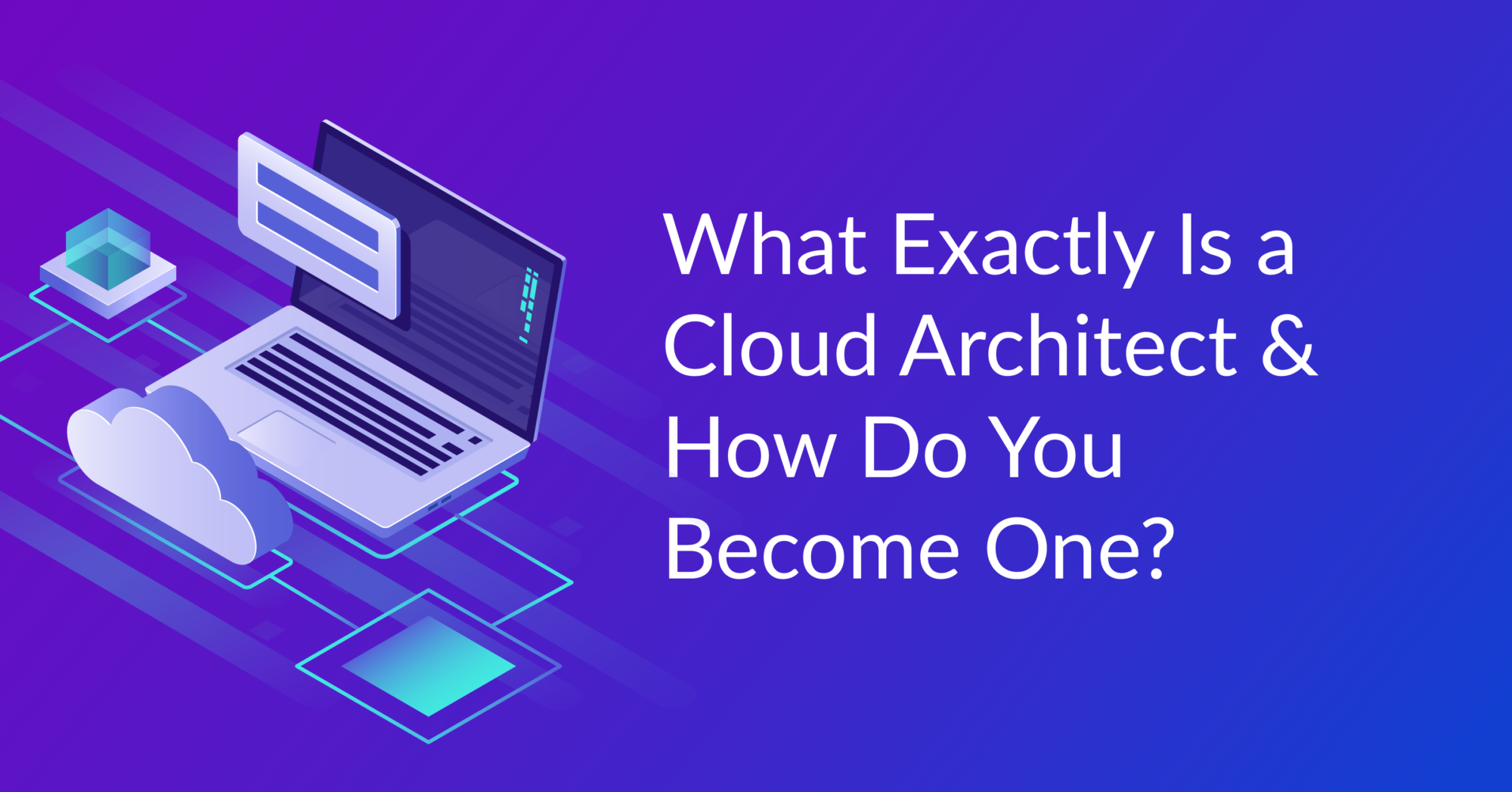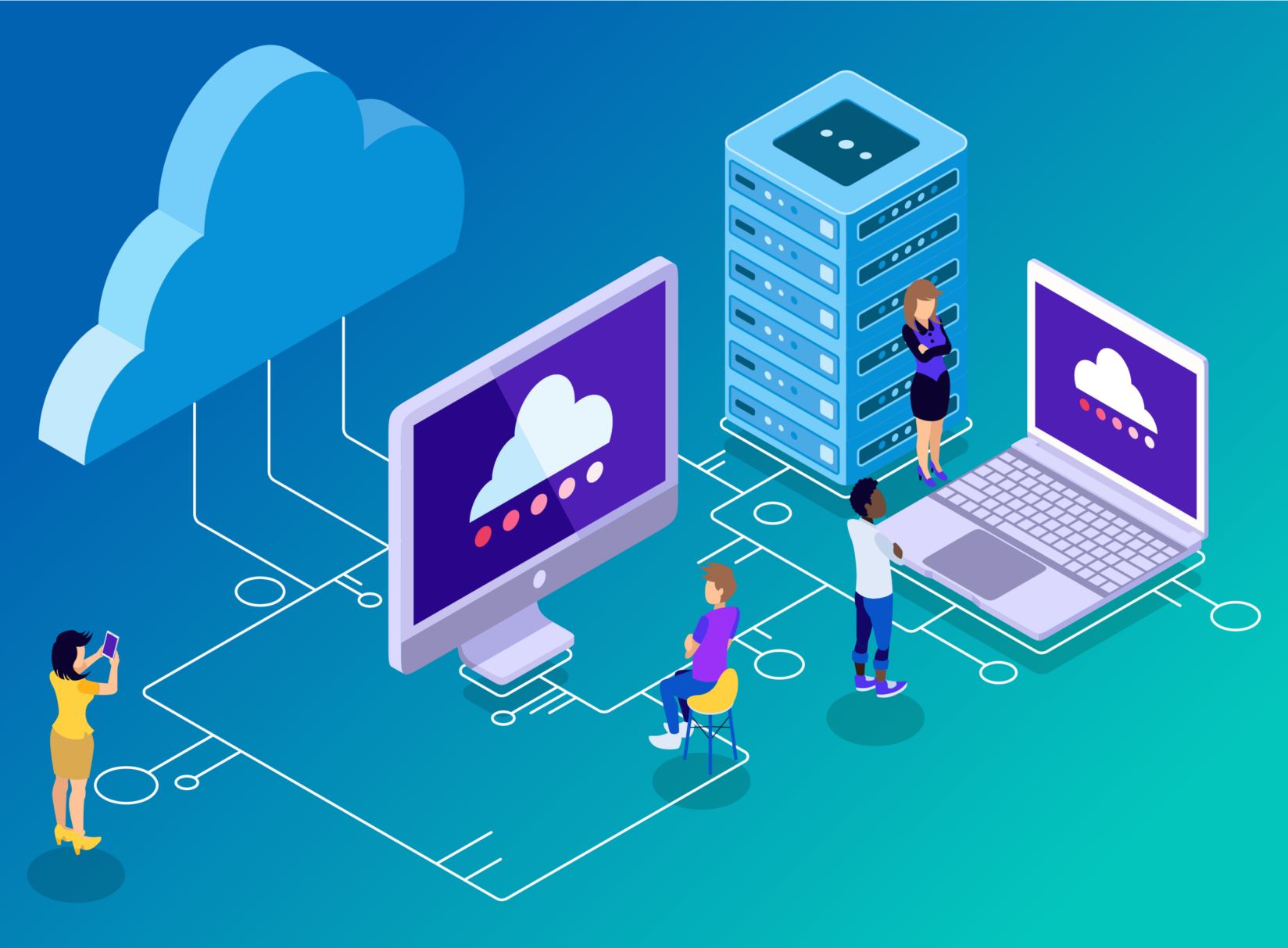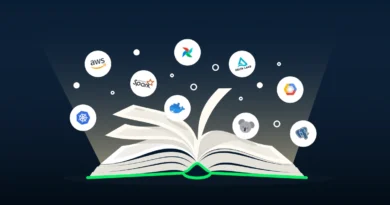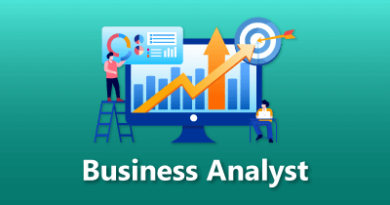Free Cloud Architect Course (6Months)
Cloud Architect:
Brief Job Role Description: Individuals in this job are responsible for designing, maintaining, evaluating and testing architectures of cloud products and solutions. They create enterprise policies and guidelines for cloud implementation and governance. They assess cloud vendors and third party cloud service providers. They also assist in validating customer proposals and project plans for cloud implementation.
Personal Attributes: Cloud Architects must manage and collaborate with various stakeholders while developing solution architectures. They must have a strong analytical mindset and ensure that their technical knowledge is constantly updated.

Define enterprise cloud guidelines and implement regulatory compliances:
Understanding business and technology requirements
To be competent, the user/individual on the job must be able to:
PC1. conduct an analysis of the business requirements of the organization
PC2. identify assets deployed in the cloud and on-premise and understand the regulatory & security requirements
PC3. understand how different assets deployed (hybrid/multi-cloud/public/private) in cloud and on-premise work together
Development of standards & policies
PC4. develop programming and design standards for developing and maintaining cloud solutions
PC5. define standards for allocation and usage of cloud resources
PC6. develop policies for user access and management of cloud resources
PC7. define enterprise processes to ensure the satisfactory performance of cloud systems
PC8. develop guidelines to contribute to open source development if necessary
Implementation of regulatory compliances
PC9. identify regulatory standards [such as PCI DSS (Payment Card Industry Data Security Standard) , HIPAA ( Health Insurance Portability and Accountability Act) etc.] and compliance requirements such as [GDPR ( General Data Protection Regulation) etc.] that the organization must adhere to
PC10. establish controls to ensure compliance of established policies, processes and standards
Organizational
Context
The user/individual on the job needs to know and understand:
KA1. organizational policies, procedures and guidelines which relate to defining standards and policies
organizational policies and procedures for sharing data
KA3. organizational policies and procedures for documenting various standards and regulations
KA4. who to involve while evaluating regulations and compliances and creating plan to implement standards and regulation
KA5. the range of standard templates and tools available and how to use them
KA6 understanding of cloud deployment models
KA7 best practices for developing cloud solutions
Technical
Knowledge
The user/individual on the job needs to know and understand:
KB1. different design standards for developing solutions
KB2. how to regulate usage of cloud resources
KB3. how to regulate user access to resources
KB4. different compliance/regulatory standards applicable to the organization
KB5. how to design enterprise processes
The user/individual on the job needs to know and understand how to:
Reading Skills
SA1. follow instructions, guidelines, procedures, rules and service level agreements
Team Work
SA2. contribute to the quality of team work
SA3. work independently and collaboratively
Writing Skills
SA4. complete accurate well written work with attention to detail
B. Professional Skills
The user/individual on the job needs to know and understand how to:
Analytical Thinking
SA5. ability to understand business impact and disseminate relevant information to others
SA6. pass on relevant information to others
Attention to Detail
SA7. check the work is complete and free from errors
Critical Thinking
SA8. apply balanced judgments to different situations
SA9. provide opinions on work in a detailed and constructive way
Decision Making
SA10. make decisions on suitable courses
Plan and Organize
SA11. plan and organize the work to achieve targets and deadlines
Problem Solving
SA12. apply problem-solving approaches in different situations

Translate business-level use cases into technical requirements and
specifications:
Requirements mapping
To be competent, the user/individual on the job must be able to:
PC1. define functional and non-functional requirements of the customer/internal departments/ the organization itself
PC2. document the requirements of the client
PC3. translate business requirements into technical and IT related specifications
PC4. validate requirements with appropriate stakeholders, both internal and external to the organization
Organizational
Context (Knowledge of the company/ organization and its processes)
The user/individual on the job needs to know and understand:
KA1. organizational policies, procedures and guidelines which relate to defining functional and non-functional requirements
KA2. organizational policies and procedures for sharing data
KA3. organizational policies and procedures for documenting business requirements
KA4. who to involve while validating technical requirements and specification
KA5. the range of standard templates and tools available and how to use them
. Technical
Knowledge
The user/individual on the job needs to know and understand:
KB1. how to define functional requirements
KB2. how to define non-functional requirements
KB3. how to document business requirements
KB4. how to define technical requirements
Core / Generic Skills
The user/individual on the job needs to know and understand how to:
Listening and Speaking Skills
SA1. ask for clarification and advice from appropriate people
SA2. listen effectively and orally communicate information accurately
Writing Skills
SA3. complete accurate well written work with attention to detail
B. Professional Skills
The user/individual on the job needs to know and understand how to:
Analytical Thinking
SA4. anaylze business impact and disseminate relevant information to others
SA5. pass on relevant information to others
Attention to Detail
SA6. check the work is complete and free from errors
Customer Centricity
SA7. build and maintain positive and effective relationships with customers
SA8. work effectively in a customer facing environment
Problem Solving
SA9. seek clarification on problems from others

Analyze, design and maintain cloud architecture that meets business requirements:
Designing solution architecture
To be competent, the individual working on the job must be able to:
PC1. identify the appropriate cloud delivery model (such IaaS, PaaS, SaaS etc.)
PC2. define schemas for deploying cloud resources
PC3. select appropriate cloud computing framework guidelines (such as Cloud Native Computing Framework etc.) to create cloud architecture
PC4. undertake impact analysis on major architecture options and incorporate major cloud native considerations when migrating applications to cloud
PC5. define the RAID (risk, assumption, issues and dependencies) catalog
PC6. define cloud architecture that maps business requirements to application stack and meets network requirements
PC7. define disaster recovery protocols to be followed in case of system failures
Securing solution architecture
PC8. define cloud security standards and policies, including security threats
PC9. evaluate the security capabilities provided by cloud service providers
PC10. conduct risk assessment and develop a risk management strategy
PC11. define Identity and Access Management (IAM) guidelines to ensure security of cloud systems
PC12. define controls to ensure the security of the cloud platform
Architecture review & maintenance
PC13. document and maintain the solution architecture implemented in the organization
PC14. review existing system architecture designs to ensure balance of service quality, use of appropriate technology and efficient utilization of resources
PC15. define and create monitoring and reporting framework or process
PC16. monitor changes in solution design standards and update architecture
PC17. update and share existing solution architectures with relevant stakeholders
Knowledge and Understanding (K)
A. Organizational
Context (Knowledge of the company/ organization and its processes)
The individual on the job needs to have knowledge of:
KA1. organizational policies, procedures and guidelines which relate to designing new solution architecture
KA2. organizational policies and procedures for sharing data
KA3. organizational policies and procedures for documenting solution architecture
KA4. who to involve when designing new solution architecture
KA5. the range of standard templates and tools available and how to use them
B. Technical
Knowledge
The individual on the job needs to know and understand:
KB1. different types of cloud delivery models
KB2. how to define cloud deployment schemas
KB3. how to define components and component specifications for solutions
KB4. how to scale a solution architecture
KB5. different cloud architecture standards and frameworks
KB6. how to create RAID (risk, assumption, issues and dependencies) catalog
KB7. how to mitigate disaster
KB8. different types of governance standards
KB9. different types of security standards and policies
KB10. how to assess security risk
KB11. how to regulate access to resources
KB12. different types of cloud monitoring frameworks

Core / Generic Skills
The user/individual on the job needs to know and understand how to:
Listening and Speaking Skills
SA1. listen effectively and orally communicate information accurately
Reading Skills
SA2. follow instructions, guidelines, procedures, rules and service level agreements
Team Working
SA3. work independently and collaboratively
Writing Skills
SA4. complete accurate well written work with attention to detail
B. Professional Skills
The user/individual on the job needs to know and understand how to:
Analytical Thinking
SA5. analyze business impact and disseminate relevant information to others
SA6. analyze data and activities
SA7. pass on relevant information to others
Attention to Detail
SA8. check the work is complete and free from errors
Critical Thinking
SA9. apply balanced judgments to different situations
Customer Centricity
SA10. deliver consistent and reliable service to customers
SA11. check that own/peers’ work meets customer requirements
Decision Making
SA12. make decisions on suitable courses
Plan and Organize
SA13. plan and organize work to achieve targets and deadlines
Problem Solving
SA14. apply problem-solving approaches in different situations
Design and maintain strong security architecture:
Defining security requirements
To be competent, the individual working on the job must be able to:
PC1. identify security requirements of customers/organizations and internal departments
Designing security architecture
PC2. plan, research and design robust security architectures that satisfy the security requirements of the organization
PC3. identify and adopt security standards (such as ISO/IEC 27017, ISO/IEC 27018 etc.), policies and protocols appropriate for the solution
PC4. implement security architecture across all layers of the solution (such as the compute, network, storage etc.)
PC5. define security safeguards (such as routers, firewalls, Identity Access Management tools etc.) to ensure security of cloud assets
PC6. ensure the security architecture allows only authorized users to access the different cloud resources deployed
PC7. continuously update and upgrade security architecture as needed
Implementation of security policies & standards
PC8. ensure that security policies and standards are followed at all times
PC9. ensure that solution architecture allows day-to-day security processes such as threat and vulnerability management
PC10. determine incidence response procedures to monitor security and privacy
Ensuring architecture security
PC11. conduct security tests (such as threat analysis, vulnerability scanning, penetration testing, risk assessment etc.) to ensure the architecture behaves as per the security requirements
PC12. ensure that solution architecture implements, operates and controls prescribed security design
A. Organizational
Context
The individual on the job needs to have knowledge of:
KA1. organizational policies, procedures and guidelines which relate to designing security architectures
KA2. organizational policies and procedures for sharing data
KA3. organizational policies and procedures for documenting security architectures, authorization protocols and security policies
KA4. who to involve while adopting security safeguards and drafting security policies
KA5. the range of standard templates and tools available and how to use them
Technical
Knowledge
The individual on the job needs to know and understand:
KB1. how to define security requirements of the organization/customer
KB2. different types of standard security architectures
KB3. different types of security standards and protocols (such as ISO/IEC 27017, ISO/IEC 27018 etc.)
KB4. different types of security safeguards to secure solution architecture
KB5. different governance issues and standards for data storage, security, privacy and monitoring
KB6. how to regulate access to different systems and sub-systems
KB7. different types of security tests (such as threat analysis, vulnerability scanning, penetration testing, risk assessment etc.)
KB8. how to scale the security architecture
Core / Generic Skills
The user/individual on the job needs to know and understand how to:
Listening and Speaking Skills
SA1. ask for clarification and advice from appropriate people
Team Working
SA2. work effectively in a team environment
Writing Skills
SA3. complete accurate well written work
Professional
The user/individual on the job needs to know and understand how to:
Analytical Thinking
SA4. analyze architecture related decisions on business and organization
SA5. analyze business impact and disseminate relevant information to others
SA6. analyze data and metrics for various use-cases and environments
SA7. pass on relevant information to others
SA8. configure data and disseminate relevant information to others
Attention to Detail
SA9. check the work is complete and free from errors
Critical Thinking
SA10. apply balanced judgments to different situations
Customer Centricity
SA11. deliver consistent and reliable service to customers
Decision Making
SA12. make decisions on suitable courses
Plan and Organize
SA13. plan and organize the work to achieve targets and deadlines
SA14. check the work is complete and free from errors
Problem Solving
SA15. apply problem-solving approaches in different situations
Ensure cloud platforms and services are scalable, resilient and fault-tolerant:
Functional and non-functional testing
To be competent, the individual working on the job must be able to:
PC1. define metrics to measure performance of systems deployed in cloud
PC2. test application and cloud systems for scalability, reliability, recovery and latency performance
PC3. identify bottlenecks preventing systems performance such as scalability, reliability, recovery and latency
Interoperability & compatibility testing
PC4. evaluate modifiability of solution architecture and measure the speed and costs required to make changes to it
PC5. evaluate portability of solution architecture based on its ability to run in multi-cloud environments
Ensuring solution security
PC6. identify potential security threats and evaluate the security of the systems based on their ability to resist security threats
PC7. incorporate appropriate security measures (such as authentication services, Identity and Access Management (IAM)etc.) in the solution architecture to ensure security
PC8. create mitigation plans and processes to ensure disaster recovery in case of failure
Ensuring scalability
PC9. incorporate standard cloud native and cloud first frameworks (such as Oracle Cloud Native Framework etc.) in the solution architecture to ensure scalability of solution
PC10. identify auto-scaling services, load balancing and container services to address scalability requirements
PC11. leverage analytics to gather insights on performance of different systems and sub-systems
Systems Upgradation
PC12. perform regular tech upgrades to meet solution architecture design goals
PC13. ensure upgrades fulfill scalability, reliability and security requirements
Knowledge and Understanding (K)
A. Organizational
Context (Knowledge of the company/ organization and its processes)
The individual on the job needs to have knowledge of:
KA1. organizational policies, procedures and guidelines which relate to testing platforms and services
KA2. organizational policies and procedures for sharing data
KA3. organizational policies and procedures for documenting security threats, mitigation plans and systems upgradation plans
KA4. who to involve while defining metrics to monitor system performance
KA5. the range of standard templates and tools available and how to use them
B. Technical
Knowledge
The individual on the job needs to know and understand:
KB1. how to define metrics to measure systems performance
KB2. how to test applications and systems for scalability and reliability
KB3. how to test modifiability of solution architecture
KB4. how to test portability of solution architecture
KB5. different types of security threats
KB6. different types of security standards and protocols (such as ISO/IEC 27017, ISO/IEC 27018 etc.)
KB7. different types of security safeguards to secure solution architecture
KB8. how to test the security of the application/solution
KB9. how to create a disaster mitigation plan
KB10. different types of load balancing and auto-scaling solutions
KB11. how to perform system upgrades
KB12. different cloud native architecture standards and frameworks
Skills (S)
The user/individual on the job needs to know and understand how to:
Listening and Speaking Skills
SA1. ask for clarification and advice from appropriate people
Team Working
SA2. work effectively in a team environment
Writing Skills
SA3. complete accurate well written work
B. Professional Skills
The user/individual on the job needs to know and understand how to:
Analytical Thinking
SA4. analyze business impact and disseminate relevant information to others
SA5. analyze data and understand its implications on business
SA6. pass on relevant information to others
Attention to Detail
SA7. check the work is complete and free from errors
Critical Thinking
SA8. apply balanced judgments to different situations
Customer Centricity
SA9. deliver consistent and reliable service to customers
Decision Making
SA10. make decisions on suitable courses
Plan and Organize
SA11. plan and organize work to achieve targets and deadlines
Problem Solving
SA12. apply problem-solving approaches in different situations
SA13. seek clarification on problems from others
Define monitoring parameter and monitoring tools to monitor and manage cloud services:
Analyzing cloud utilization
To be competent, the user/individual on the job must be able to:
PC1. conduct an analysis of the utilization pattern of cloud services and resources
PC2. identify schemas used for deploying cloud resources
Monitoring & reporting
PC3. create KPIs to monitor performance of cloud services
PC4. identify tools for monitoring performance of cloud services
PC5. define methods for monitoring application and infrastructure resource usage on cloud
PC6. create a structure for reporting platform usage data to relevant stakeholders
Organizational
Context
The user/individual on the job needs to know and understand:
KA1. organizational policies, procedures and guidelines which relate utilization of cloud resources
KA2. organizational policies and procedures for sharing data
KA3. organizational policies and procedures for documenting processes for monitoring utilization of cloud resources
KA4. who to involve while defining metrics to monitor system performance and resource utilization
KA5. the range of standard templates and tools available and how to use them
Technical
Knowledge
The user/individual on the job needs to know and understand:
KB1. different schemas for deploying cloud resources
KB2. how cloud services and resources are utilized
KB3. how to define KPIs to monitor performance of cloud services
KB4. different types of standard tools to monitor utilization of cloud resources
KB5. different types of standard tools to monitor performance of cloud services
KB6. how to report usage of cloud resources
KB7. how to report performance of cloud services
Skills (S)
A. Core / Generic Skills
The user/individual on the job needs to know and understand how to:
Reading Skills
SA1. follow instructions, guidelines, procedures, rules and service level agreements
Team Working
SA2. work effectively in a team environment
Writing Skills
SA3. complete accurate well written work with attention to detail
B. Professional Skills
The user/individual on the job needs to know and understand how to:
Analytical Thinking
SA4. analyze business impact and disseminate relevant information to others
SA5. analyze data and understand its implications on business
SA6. pass on relevant information to others
Attention to Detail
SA7. check the work is complete and free from errors
Critical Thinking
SA8. apply balanced judgments to different situations
SA9. provide opinions on work in a detailed and constructive way
Customer Centricity
SA10. check that own/peers’ work meets customer requirements
SA11. deliver consistent and reliable service to customers
Decision Making
SA12. follow rule-based decision-making processes
SA13. make decisions on suitable courses
Plan and Organize
SA14. plan and organize work to achieve targets and deadlines
Guidelines for Assessment
- Criteria for assessment for each Qualification Pack will be created by the Sector Skill Council. Each Performance Criteria (PC) will be assigned marks proportional to its importance in NOS. SSC will also lay down proportion of marks for Theory and Skills Practical for each PC.
- The assessment for the theory part will be based on knowledge bank of questions created by the SSC.
- Assessment will be conducted for all compulsory NOS, and where applicable, on the selected elective/option NOS/set of NOS.
- Individual assessment agencies will create unique question papers for theory part for each candidate at each examination/training center (as per assessment criteria below).
- Individual assessment agencies will create unique evaluations for skill practical for every student at each examination/training center based on this criterion.
- To pass a QP, a trainee should score an average of 70% across generic NOS’ and a minimum of 70% for each technical NOS
- In case of unsuccessful completion, the trainee may seek reassessment on the Qualification Pack.







